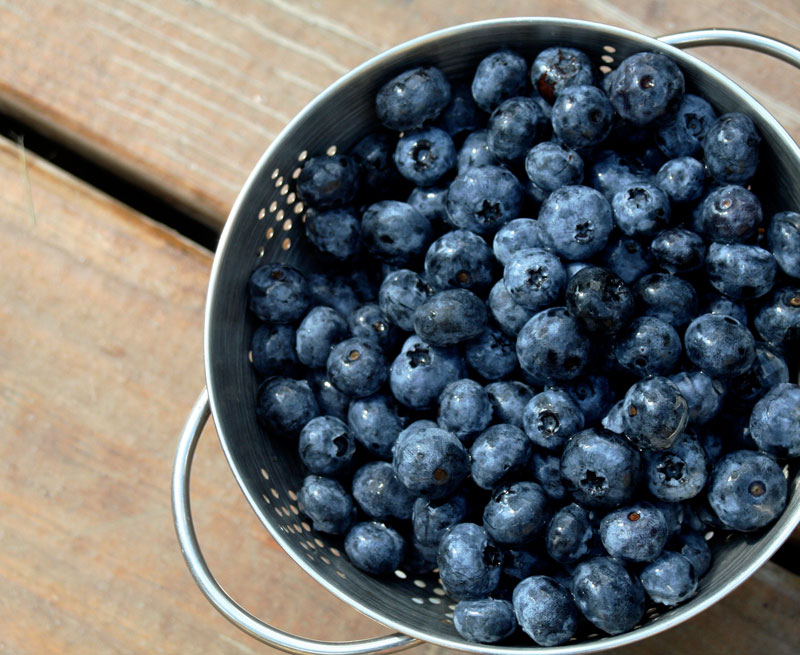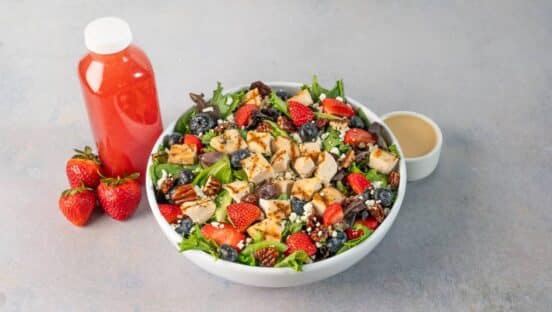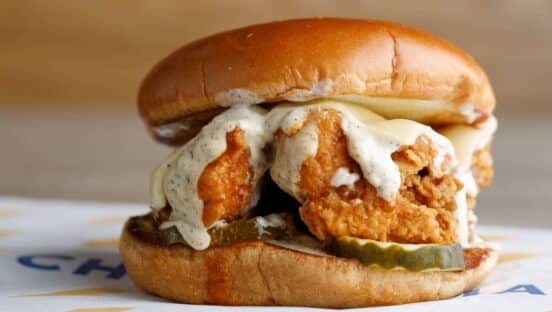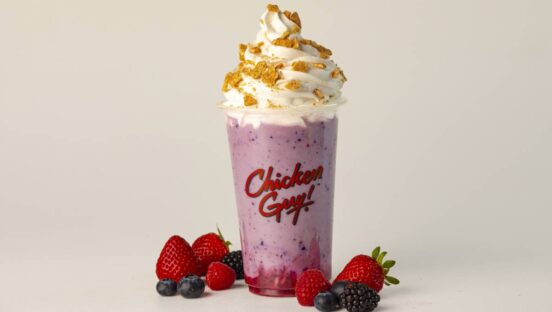It’s peak blueberry season, and, whether it takes the form of a breakfast, dessert, or side item, the up-and-coming superfruit is finding its way to more menus across the quick-serve industry.
Take, for example, Dairy Queen; the brand offers blueberries as toppings for sundaes, shakes, and malts, and is testing them in the breakfast daypart with yogurt parfaits. The company’s Orange Julius brand also features blueberries as a stand-alone item, paired with acai berries, or in smoothies.
“We will continue to offer these items with possible expansion into future beverage lines we are currently investigating,” says Mary Joyce, vice president of product development for American Dairy Queen. “I also see the opportunity for fresh blueberries to potentially be used on salads or in individual packs as a fruit option for our kids’ meals.”
The U.S. Highbush Blueberry Council (USHBC) has been working on modernizing blueberries’ image, repositioning them as “little blue dynamos” in an effort to target the ever-important Millennial generation. The USHBC hopes to double blueberry consumption by the end of the decade.
The organization recently held a three-day chef immersion at the Culinary Institute of America (CIA) in Hyde Park, New York, to promote ways in which blueberries can be featured on menus. More than a dozen chefs and foodservice professionals representing both quick-service and full-service restaurants gathered at the CIA for blueberry tutelage, tasting, and tinkering.
The event kicked off with a five-course blueberry-centric meal created by chef, registered dietitian, and author Laura Pensiero at Gigi’s Trattoria in Rhinebeck. Pensiero’s courses included cold-pressed blueberry juice with white wine; warm blueberry vinaigrette over baby spinach, toasted almonds, and cold smoked salmon; roasted blueberries on pasta; duck confit with blueberry spoon bread; and Italian blueberry custard.
Afterward, attendees—inspired to get into the test kitchen to create their own blueberry cuisine—were assisted by chefs in a culinary innovation kitchen challenge. The “Iron Chef”–style event teamed chefs with groups to prepare four blueberry-inspired dishes: a breakfast item, salad, beverage, and entrée. Each team was equipped with a market basket of ingredients, access to the kitchen pantry, and blueberries for the picking—fresh, frozen, dried, freeze-dried (which could be ground into powder), pureed, or as syrup or juice.
The teams had two hours to create, prepare, plate, and display the more than 20 blueberry creations. Results included huevos rancheros with fresh blueberry-tomato salsa; whole grain blueberry oat bars made with freeze-dried blueberries; blueberry tapenade made with frozen blueberries, eggplant, and olives; and lemonade made with blueberry juice, fresh lemon juice, simple syrup, and tapioca pearls.
Participant Russell Baratz, chief executive chef and division chef at Guest Services Inc., says he is planning to launch a blueberry theme for his cafeterias. He says the USHBC event inspired dishes like a healthy blueberry and quinoa salad, a savory chicken breast with blueberry and sage balsamic sauce, and decadent blueberry and pecan butter cream cheese crepes.
Baratz, who uses frozen as well as other available forms of blueberries, says blueberries won’t be confined to the summer months for much longer.
“I see blueberries breaking out of the seasonal offerings,” Baratz says. “We will see them throughout the year, on the salad bar; in fresh-baked, low-fat bars; as beverages of all types, including energy drinks and smoothies; on made-to-order salads; in sauces on grilled chicken; [and] in salsas.
“With the continued education for consumers on the health benefits,” Baratz adds, “consumption is sure to grow.”









